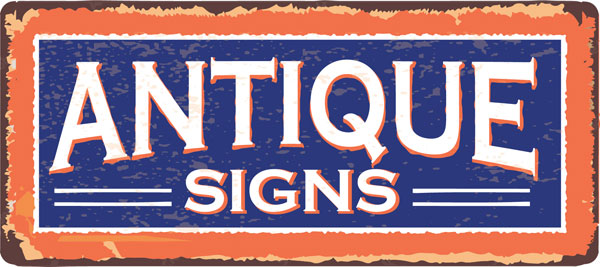Enamel sign manufacturing was once a booming business.
The early 20th century saw rapid technological development and increasing globalisation, as well as a growing awareness of the importance of advertising.
And what better way to advertise a new product than an eye-catching and nigh on indestructible enamel sign?
But meeting the ever-increasing demand for enamel signs wasn’t easy. Without the aid of modern automation and transportation, fulfilling all those orders was quite the logistical challenge.
Big companies required teams of skilled craftsmen, intricate planning and a dedicated fleet of delivery horses to handle commercial orders, any one of which could exceed a hundred thousand signs.
Here’s a quick look into how an enamel sign would have been manufactured and delivered to your shopfront a century ago.
Obtaining the raw materials
Few raw materials go into making an enamel sign – but those that do are heavy.
Metal sheets, mountains of metal oxide, glass and clay – transporting these materials in large quantities wasn’t easy in the early 1900s.
Without haulage trucks or commercial vehicles, manufacturers in Britain and the US relied on rail, waterways and horse-drawn transport.
Using networks of industrial canals and railways, they could have raw materials delivered in bulk, sometimes directly to the factory. Larger manufacturers made use of personal rail sidings and canal arms – offshoots from the main railways and waterways that ran alongside industrial districts – to allow for direct delivery straight from their suppliers.
Manufacture
Once gathered, the raw materials could be mixed and prepared, ready for enamelling.
Metal base
High-quality iron sheets (later steel) had to be carefully treated before they could serve as a base for the signs.
First, they were heated in a scaling furnace, then stretched out and cut to shape. To ensure they had enough ‘grip’ for enamel bonding, they were then immersed in acid baths and sandblasted.
The metal was then manually hammered, drilled and rolled into its final form, ready for enamelling.
Enamel coating
The prepared metal was first coated with a grey-white suspension known as ‘frit’, composed of water, clay and powdered glass. The coating was left to dry, then fired in a kiln at 900° Celsius, where it would form the ‘ground’ layer of enamel.
With the base layer in place, subsequent layers of colour could be added using coloured frit.
Frit was coloured by adding various metal oxides into the mixture. Different oxides would produce different colours. For example, cobalt produced blue enamel, while iron produced red.
Each layer of colour had to be applied separately, so the sign would be dusted with one coloured frit, then fired again in the furnace before the next colour was added.
The order of colour application depended on the shade of the colour and the temperature at which the oxide reached the ideal colour. Darker colours were added later, so as to not undercut the lighter tones, while oxides with a lower ideal temperature were added last to avoid ‘overcooking’ the colour.
Before applying any decals or stencils, the sign was allowed to cool to a safe temperature. For these more detailed layers, an adhesive such as gum Arabic was applied to ensure the frit stuck properly to the cooled surface during handling. The adhesive was burned away during firing, leaving a pristine enamel image.
The enamelling process took place on a large scale, with factories sometimes containing over a dozen working furnaces.

